Continental Launches New Truck Tyre Line Aimed at CO2 Reduction
- By TT Bureau
- September 11, 2020

Continental’s new truck tyre line, The Conti EcoRegional family, is said to enable fleet operators to significantly increase the efficiency of their vehicles in regional transport. The Conti EcoRegional HS3 and HD3 are built to reduce CO2 emissions thanks to a new manufacturing process in combination of an innovative tread design for the steering axle and a rubber compound that is optimized for rolling resistance for the drive axle. Continental claims that during this process, no sacrifices have been made in terms of the other significant tire properties such as mileage, robustness and traction.
Stretching the limits of tyre technology
The Conti EcoRegional HS3, which was produced using the new ‘Conti Diamond’ technique production process, features an optimised tread surface pattern in the ground contact area with a modified tread groove geometry, reduced sipe width, and W-tread groove technology for particularly even abrasion. A highly stable configuration of the circumferential longitudinal tread grooves enables greater mileage while also reducing fuel consumption. The use of sipes in the newly designed tread ribs provides additional grip edges that are important for the traction characteristics. The Conti EcoRegional HD3 runs with the tried-and-tested tread concept of the Conti Hybrid Gen 3 line, but uses a new, innovative tread compound in the form of Conti InterLock Technology. It enables a level of low rolling resistance with the same mileage, especially in regional and highway applications.


The design of the tread with ‘cap’ (responsible for adhesion, abrasion resistance, and directional stability) and ‘base’ (rolling resistance and damping) allows the individual zones to be optimized for specific tasks, thereby helping to resolve the trade-off. In both products, Conti EcoRegional HS3 and HD3, base compounds optimised for rolling resistance are used. In addition, rubber compounds optimised for rolling resistance are used in the casing.
Meeting the toughest CO2 regulations
The vehicle energy consumption calculation tool (VECTO), which was introduced by the European Commission, is intended to ensure that the ambitious European targets for CO2 reduction are met. In order to meet the objectives of the Paris Climate Change Agreement, the European Commission adopted the first carbon dioxide emissions regulation for newly registered heavy commercial vehicles (EU Regulation 2019/1242) in 2019. This calls for a reduction in the average CO2 emissions for new heavy commercial vehicles by 15 percent by 2025 or 30 percent by 2030, compared in each case to the reference year July 2019 to June 2020. This regulation currently applies to 4x2 and 6x2 trucks with a permissible gross vehicle weight of more than 16 metric tons, with a future expansion currently being discussed by the European Commission.

Continental has also launched a microsite containing useful information about the latest CO2 emissions regulation for heavy goods vehicles and the simulation tool for trucks called VECTO. Continental aims to provide fleet managers with comprehensive information about the new regulation and its implications for them, given that tires significantly influence fuel consumption and by that the CO₂ emissions generated by a vehicle.
The microsite contains-
-Videos explaining how the VECTO simulation tool works and what exactly is calculated for the HDVs (also available on YouTube) as well as a video about why industry and society need to act now.
-Information about business effects for fleet operators, focusing on fuel efficiency and greater transparency with regard to the purchase of a truck.
-Comprehensive infographic about the new regulation, with facts and figures on how the VECTO tool performs its calculations, which vehicles are affected, the potential of tires to reduce fuel consumption and fleet operating costs, plus other parameters to reduce CO₂ emissions.
Constantin Batsch, Head of Truck Tires Replacement at Continental’s business region Europe, Middle East and Africa (EMEA) said, “From our talks with customers we see that there is a lot of interest from fleet managers all over Europe. We know that fuel consumption and thereby CO₂ emissions will not only become more important when buying a new truck, but also when replacing tires. So, we want to provide fleet operators with important information on how the new CO₂ regulation and the resulting changes for tires affect their business and how they can make best use of it. We see ourselves as service consultants, especially with regard to finding the right tire, tire management and how this helps reduce overall operating costs and CO₂ emissions.”
The European Parliament states that 25 percent of the European Union’s CO2 emissions from transport are generated by heavy-duty vehicles. If truck manufacturers fail to comply with the new regulations, they will incur penalty payments for each vehicle. Further regulations that could affect fleets directly are currently under discussion. Tires impact on up to 40 percent of fleet operating costs because they have a significant influence on fuel consumption (30 percent) as well as on repairs and maintenance (5 percent) and actual tire costs (5 percent).
Continental manufactures the Conti EcoRegional product line in the following dimensions, whereby dimensions 295/80 R 22.5, 315/70 R 22.5 and 385/65 R 22.5 are now offered with the highest-permissible load index as standard:

Fornnax Inaugurates 12-Acre Global Hub For Recycling Innovation
- By TT News
- November 27, 2025
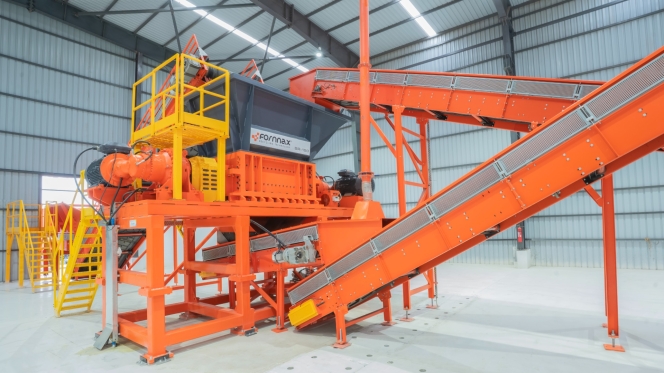
Fornnax has officially launched one of the world's largest integrated hubs for recycling innovation: a New Product Development centre and demo plant spanning over 12 acres. This facility is a critical milestone in the company's strategic vision to become a global leader in recycling solutions by 2030. It is designed to accelerate the advancement of recycling technology through a comprehensive, customer-focused approach.
The centre’s core function is its New Product Development framework, which is built upon a meticulous Gate Review Process. This system ensures precision from conception to completion. The journey begins with market research and ideation from the Sales and Marketing team, followed by a strategic review by the Leadership Team. The Design Team then creates detailed plans that are evaluated by Manufacturing, Service and Safety teams. After final approval, a functional prototype is built and subjected to a rigorous six to eight-month validation phase. The process concludes with design optimisation for mass production, officially launching the equipment for the global market. This method not just upgrades Fornnax's shredders and granulators – enhancing their capacity, energy efficiency and operational availability to 18–20 hours per day – but also validates the equipment for up to 3,000–15,000 hours under real-world conditions

A key feature of the facility is its open-door policy for clients. Customers can bring their specific materials to the demo plant to test equipment performance across various machines and conditions, providing a risk-free environment for informed investment decisions. The centre will also drive research into emerging recycling applications, such as E-waste, cables and lithium-ion batteries, where specialised engineering teams will conduct feasibility studies to design tailored solutions.
Beyond technology, the facility includes an OEM training centre dedicated to developing a skilled workforce. The programme trains operators and maintenance engineers, who gain hands-on experience before being deployed to support Fornnax's customer base. The company will also deliver comprehensive corporate training to domestic and international clients, empowering them with the expertise for optimal plant operation and maintenance. By uniting R&D, testing and training under one roof, Fornnax is establishing a powerful foundation to scale its offerings and lead the next generation of recycling technology.
Jignesh Kundariya, Director and CEO, Fornnax, said, "Innovation in product development is the key to success of becoming a global leader. With this new facility, we now have the speed, flexibility and controlled environment to design, test and validate new technologies in just six to eight months, something that would take significantly 4–5 years at a customer site. Each machine will undergo validation according to global standards, with every critical part and assembly rigorously tested under Engineering Build (EB) and Manufacturing Build (MB) protocols. Our goal is to empower customers with clarity and confidence before they invest. This facility allows them to test their own materials under real-world conditions, compare machines and see results firsthand. It’s not just about selling equipment; it’s about building trust through transparency and delivering solutions that truly work for their unique needs.”
Smithers to Expand Rolling-Resistance Testing Capabilities in China
- By TT News
- November 21, 2025
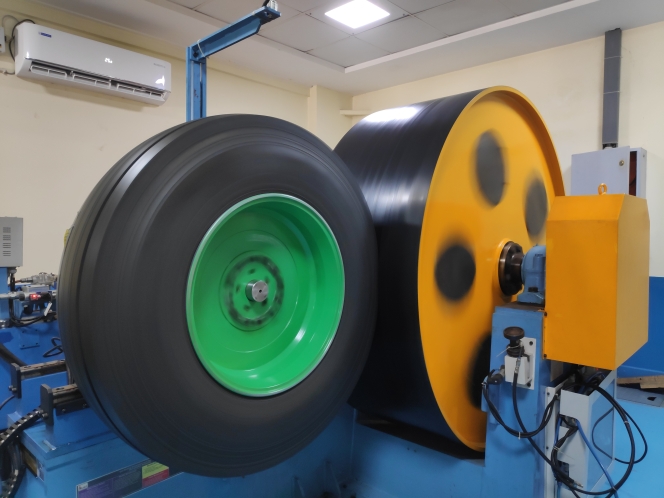
Smithers, the US-based testing and consulting group, is expanding its tyre testing operations in China with three new capabilities designed to better replicate real-world driving conditions. The investment will enhance the company’s rolling-resistance testing at its Suzhou tyre and wheel centre, strengthening its offering to global carmakers and tyre manufacturers.
The new features focus on factors that can influence vehicle energy loss, range, and overall efficiency—a growing concern as regulators tighten standards and EV makers push for longer driving range.
One new capability will allow rolling-resistance testing to be carried out with variations in slip and camber angles for passenger car and light truck tyres. Standard tests are performed at zero degrees, but even small changes in wheel alignment or body movement during real driving can affect energy consumption. The enhanced system lets customers study these effects and refine tyre designs accordingly.
Smithers is also adding high- and low-temperature rolling-resistance testing for truck and bus tyres, an extension of the temperature-controlled testing it introduced for passenger tyres in 2022. The company said demand has risen as manufacturers look to understand how cold weather affects range—a key issue for electric commercial vehicles.
A third new service will allow tyres to be tested together with chassis components such as half-shafts and brake discs. This gives OEMs independent data on how these parts contribute to overall resistance, helping them to identify where energy is being lost and to fine-tune vehicle efficiency.
All three capabilities are expected to be online by 1 December 2025.
“Smithers is seeing increased demand on a global scale for testing of tires and vehicles that more closely mimics real-world conditions,” said Derek Read, Vice President of Asia Pacific / Global Development, Materials Science and Engineering, Smithers. “These new capabilities are strategic investments into the refined, scenario-based testing our clients require to improve both tire and tire-chassis-vehicle system performance.”
Autonomous Robots Transform Continental Retreading Operations
- By TT News
- November 19, 2025
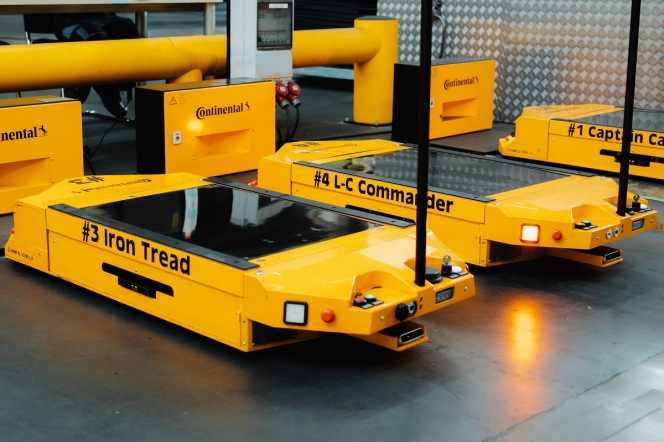
Continental's Hannover-Stöcken plant is pioneering a new era in sustainable manufacturing by seamlessly integrating advanced robotics into its core operations. Since their deployment in March 2025, a team of seven autonomous mobile robots (AMRs) has become the central nervous system for material transport, fundamentally reshaping the workflow for retreading truck and bus tyres.
This shift to automation has profoundly changed the human role on the production floor. Employees, once tasked with the physically strenuous job of manually moving heavy tyres using cranes and trolleys, are now focused on more cognitively demanding responsibilities. Their expertise is directed towards machine setup, process oversight and meticulous quality control, making their work more ergonomic and skilled.
The AMRs operate with sophisticated independence, navigating the production hall using a fusion of sensors, 360-degree cameras and AI-driven software. They efficiently ferry ‘green’ tyres between critical stages: from the building machine, where fresh rubber is applied, to the curing presses for vulcanisation and finally towards inspection. This automated coordination is digitally linked to the plant's order system, allowing for dynamic routing to optimise workflow and manage capacity.
This initiative is a cornerstone of Continental's global strategy to modernize tyre production through digitalisation and smart automation. The success in Hannover has already inspired the rollout of similar robotic solutions across the company's international network, from North America to Asia. The move aligns perfectly with the plant's sustainable mission, which is the ContiLifeCycle process itself. This process breathes new life into used tyre casings by carefully inspecting them, applying new tread rubber and vulcanising them to create a product that performs like new. The environmental benefit is substantial, as up to 70 percent of the original tyre's material is reused, significantly conserving resources.
The human element was crucial to the project's success. Continental ensured widespread employee acceptance through comprehensive training and even involved the workforce in christening the robots with creative names. This thoughtful approach has cemented the AMRs not as mere machines but as valued teammates in a shared mission to make tyre production more efficient, sustainable and future-ready.
Felix Hantelmann, head of the ContiLifeCycle plant, said, “Self-driving robots have been supporting our production workflow for six months now. They handle simple, repetitive transport tasks such as moving a tyre from one point to another. The robots are directly connected to our digital order system, so they know exactly where to go and how to coordinate with each other to get there. They are a valuable addition to our daily operations and help create a safe, efficient and ergonomically optimised production environment.”
Continental Deploys Vacuum Tech For Real-Time Tyre Wear Particle Analysis
- By TT News
- November 18, 2025
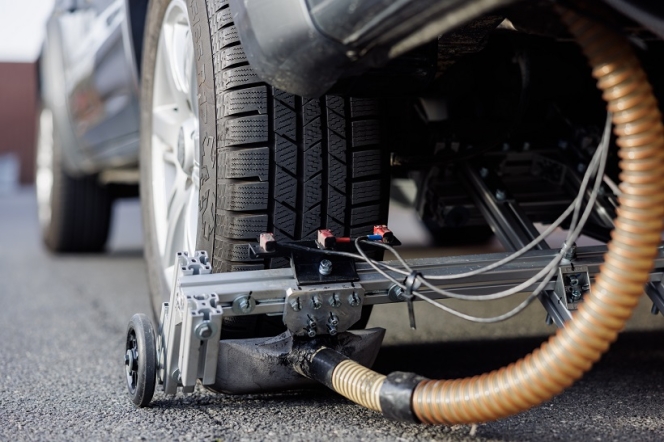
Continental's leadership in reducing tyre wear is fundamentally driven by its pioneering research into how particles are generated. A pivotal element of this strategy is the recently concluded OLRAP project, a collaboration with the Technical University of Braunschweig that broke new ground in real-world particle analysis. The research team engineered a complex experimental vehicle, outfitting it with a custom vacuum system and sensitive particle sensors. This innovative setup enabled the real-time collection and analysis of airborne particles directly at their source – the rolling tyre – under actual driving conditions. The resulting data, which for the first time correlates specific driving dynamics like aggressive acceleration and hard cornering with particle emissions, provides an unprecedented understanding of wear patterns.
This deep, data-driven insight is what directly fuels Continental's product development. By knowing precisely how and when wear occurs, engineers can make targeted optimisations to tread patterns and rubber compounds. The objective is to systematically design tyres that shed less material, thereby directly reducing their environmental footprint from abrasion. This development process rigorously maintains the critical safety and performance standards that drivers demand.
The tangible success of this research-to-development pipeline is confirmed by independent analysis, which shows Continental tyres abrade 11 percent less material than the competitor average. Furthermore, this proactive research and development strategically prepares the company for upcoming regulations like the Euro 7 standard, which will impose limits on tyre wear emissions. Beyond its own laboratories, Continental extends this commitment through cross-industry efforts, co-chairing the Tire Industry Project and contributing to public initiatives aimed at capturing tyre particles from road runoff. Through this integrated approach, Continental is leveraging fundamental scientific discovery to create more sustainable mobility solutions.


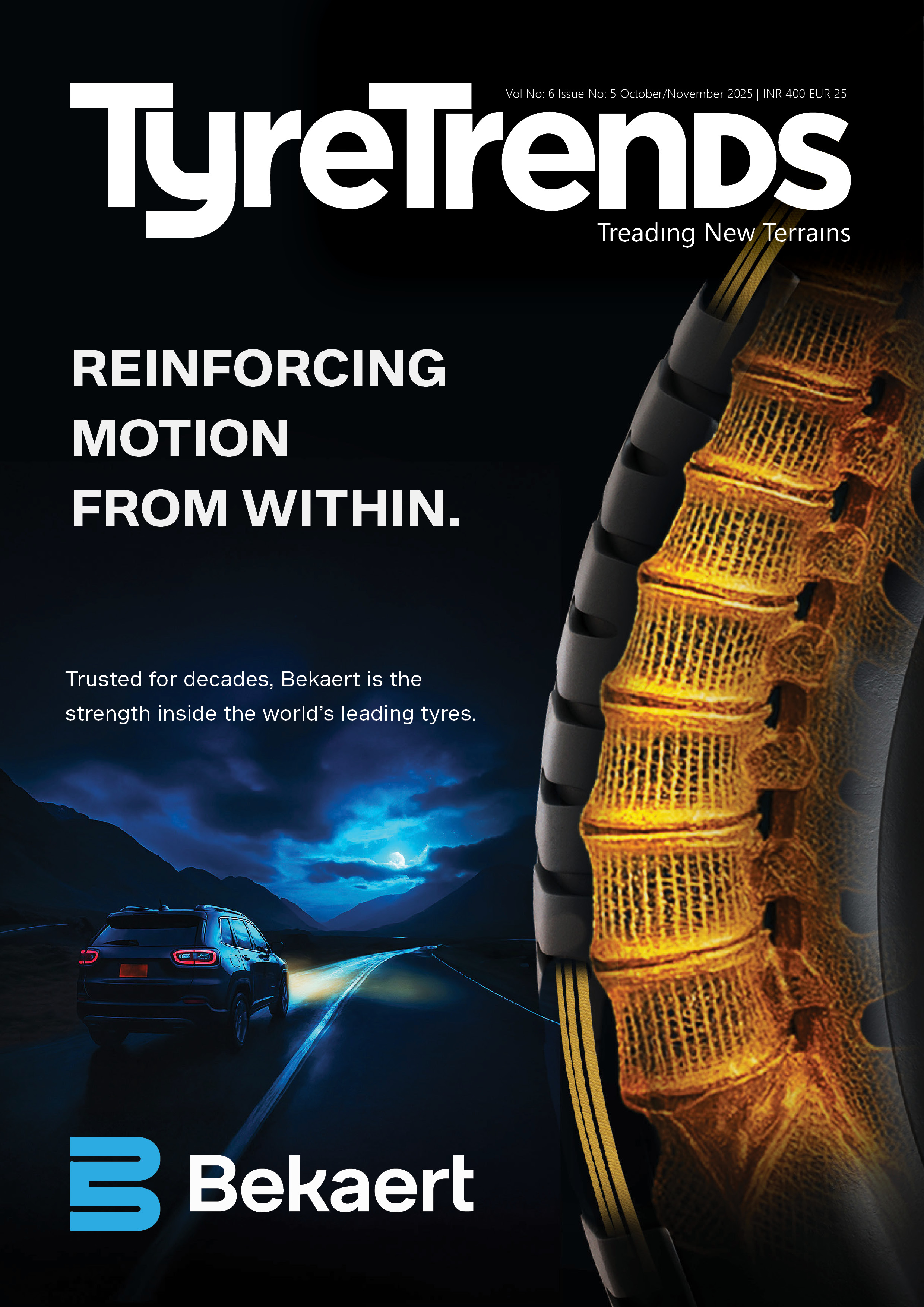




Comments (0)
ADD COMMENT